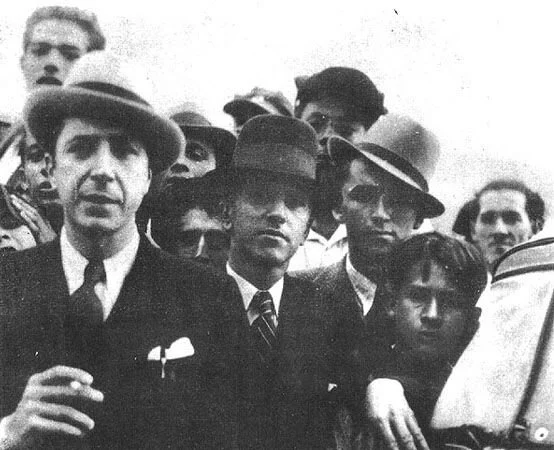Hollywood’s favorite tango by a considerable margin is the 1935 screen hit “Por una cabeza,” which Gardel sang in his last movie Tango Bar. In its original setting…
Viewing entries tagged
Carlos Gardel
Leaning close to his friend with a swell of emotion and a wag of the thumb, he asks: “You know the words to this song?” And as the small band plays in the dingy saloon, Carlos Gardel cracks a sad smile, settles in, and sings himself into eternity.
This week’s translation is an update to “Volver,” a text I reworked directly from the sheet music to achieve a more singable version in English.
The stirring tango “Soledad” features in the 1934 film El Tango en Broadway (directed by Louis J. Gasnier), a movie shot in New York, starring Carlos Gardel and scripted by lyricist Alfredo Le Pera.
Hard times call for straight talk, and the early tangos by Enrique Santos Discépolo deliver the goods with their unflinching pictures of desperation. “Yira, yira,” the greatest song of his early phase, wields its trashcan lid of street slang like a shield against sentimentality, conjuring up a grim humor that borders on the horrifying.
We usually think of that iconic tune “La cumparsita” as the most famous tango of them all, holding as it does the honor spot as the last song of the night played for dancing in modern milongas. But perhaps the only tango more widely recorded and more widely known in its heyday is ironically the one which, as a rule, is never played at milongas now—the 1927 song “Adios, muchachos.”
The 1935 film El día que me quieras is not just famous for its title number: the song “Volver” also stands among the all-time classic tangos of the silver screen. Carlos Gardel’s performance of the song shows off his unmistakable phrasing, and the clear, moving, effortless tone of his voice carries the melody at its very best.
Considered one the early masterpieces among tango lyrics, the lunfardo-heavy “Mano a mano” is perhaps the most famous work of Celedonio Flores—and a song with its own controversies too.
As the title number of the 1935 film, “El día que me quieras” became an instant classic and added yet another immortal hit to the repertoire of Carlos Gardel. With its recitative opening and interlude, the song hearkens to the tango’s most conspicuous inspiration: the arias of Italian opera.







